Are you having trouble adjusting the water temperature in your home? Adjusting the hot water temperature control valve is an important step to ensure that you are comfortable when taking a shower or doing other activities involving hot water. Here’s how to do it.
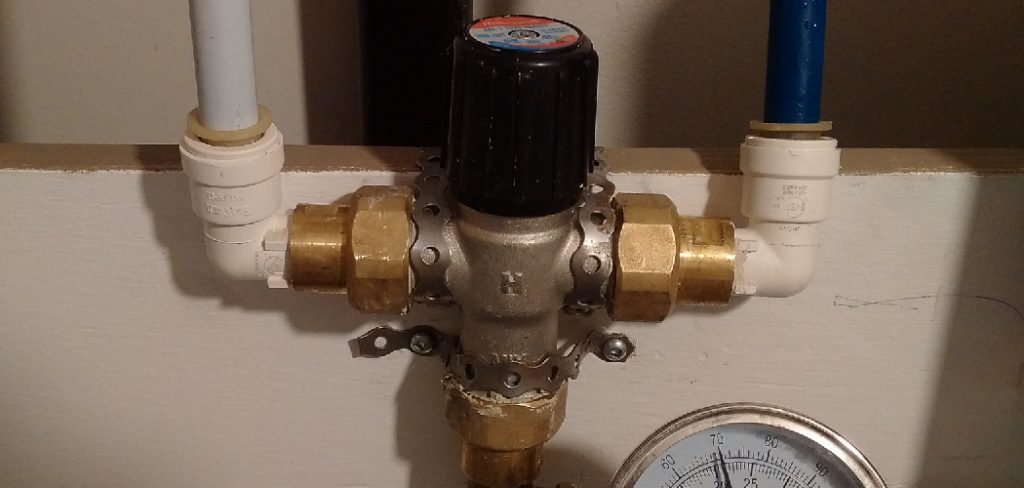
Maintaining comfortable levels of hot water in your home can be tricky, especially if your hot water needs to be adjusted regularly. If you’re looking for an easy way to ensure the temperature is always perfect, installing a hot water temperature control valve could be the ideal solution. Not only does this device provide accurate and reliable readings on your current hot water level, but it also allows you to make fine-tune adjustments without having to worry about overshooting or damaging other appliances.
In this post, we’ll discuss how to adjust hot water temperature control valve. Read on to learn more!
What are the Benefits of Installing a Hot Water Temperature Control Valve?
Installing a hot water temperature control valve offers several advantages over manual adjustment. It gives you complete control over how hot the water is and ensures that everyone in the house can enjoy comfortable water temperature levels. This can be especially useful in homes with multiple bathrooms and showers, as each user can adjust the temperature according to their preference.
In addition, a hot water temperature control valve also helps conserve energy by ensuring that only the necessary amount of hot water is used at any given time. This reduces your monthly energy bills and means you won’t have to worry about wasting too much water due to overheating or underheating.
Overall, a hot water temperature control valve is an easy-to-install device that can help you maintain comfortable water temperatures in your home.
What Will You Need?
When it comes to adjusting the hot water temperature control valve, you’ll need a few basic tools. These are the followings:
- Adjustable wrench
- Pliers
- Screwdriver
- Hot water temperature gauge
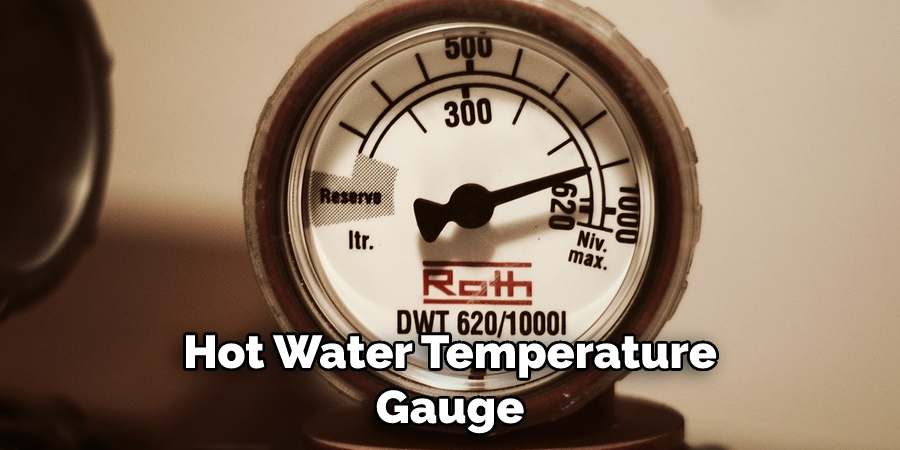
Once you have these tools at hand, you’ll need to locate the hot water temperature control valve. This will typically be located near your water heater or near the fixture that you’re trying to adjust.
10 Easy Steps on How to Adjust Hot Water Temperature Control Valve
Step 1: Turn Off the Power Supply
Before you begin adjusting the hot water temperature control valve, make sure to turn off the power supply to your water heater. This will ensure that there’s no risk of electrocution during the process. You can typically find the power switch near the water heater or on a nearby wall.
Step 2: Remove the Valve Cover
Using a screwdriver, remove the valve cover to access the hot water temperature control valve. Be careful not to damage any of the internal components during this step. Because this step requires some force, wearing protective gloves and goggles is important.
Step 3: Check the Hot Water Temperature Gauge
Once you have access to the valve, check the reading on your hot water temperature gauge. This will give you an indication of how much you need to adjust the valve. Additionally, it’s important to note how much the needle is pointing away from the midpoint.
Step 4: Adjust the Hot Water Temperature Control Valve
Using an adjustable wrench and pliers, adjust the hot water temperature control valve until you reach the desired temperature. This can be done by turning the handle clockwise or counterclockwise, depending on how much you need to adjust the temperature. If you’re unsure how to adjust the valve, then refer to the manufacturer’s instructions.
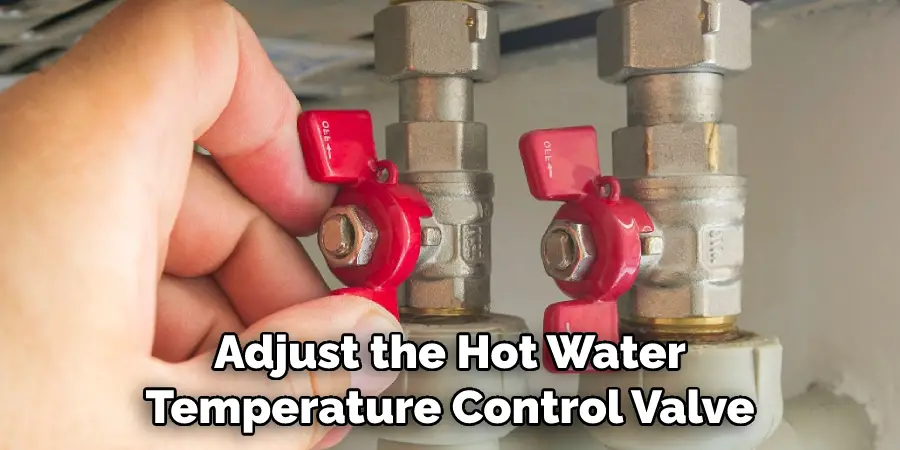
Step 5: Replace the Valve Cover
Once again, check the hot water temperature gauge to ensure the adjustment succeeded. If the reading is accurate, then secure the valve cover with a screwdriver. Ensure not to over-tighten the screws, as this may cause damage to the valve.
Step 6: Turn on the Power Supply
Once you’ve adjusted the hot water temperature control valve, turn on the power supply to your water heater. Wait for a few minutes before testing how warm the water is. Ensure that the temperature is comfortable before proceeding.
Step 7: Test the Water Temperature
After a few minutes, test how warm the water is. If it’s too cold or hot, adjust the hot water temperature control valve as needed and test again. Be careful not to over-adjust the valve, as this can cause damage to your water heater.
Step 8: Check for Leaks
Once you’ve reached an ideal temperature, check for any leaks around the valves or pipes connected to your hot water system. If there are any signs of leaking, immediately shut off your water heater’s power supply and call a professional plumber. Otherwise, you can consider the process complete.
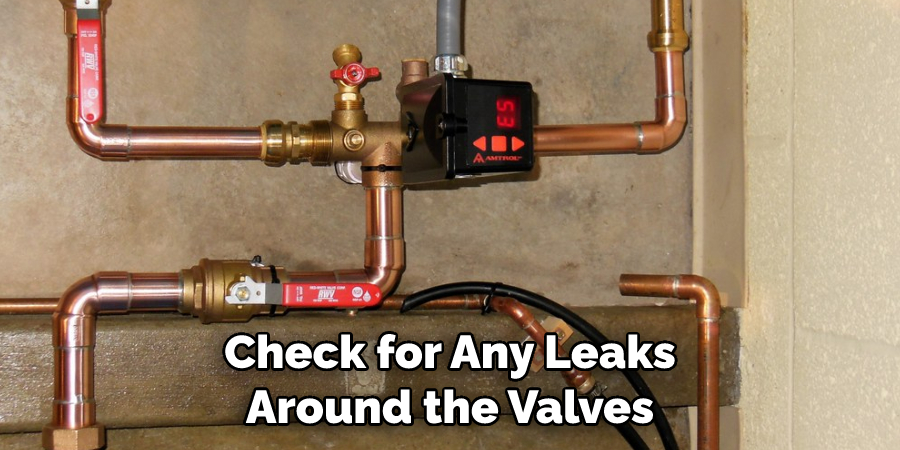
Step 9: Monitor Regularly
To keep your hot water temperature control valve in good condition, monitor it regularly to ensure that it’s working properly. Additionally, check for any signs of damage or leaking around the valve. If you suspect any issues with your hot water system, then contact a professional plumber as soon as possible.
Step 10: Enjoy Your Hot Water System
Now that you know how to adjust a hot water temperature control valve, you can enjoy having warm and comfortable showers at home. You won’t have to worry about wasting too much water due to over-heating or under-heating, either! It’s important to remember that safety should always come first, so follow all of the necessary steps when adjusting your hot water temperature control valve.
By following these simple steps, you can adjust the hot water temperature control valve on your own and enjoy warm and comfortable showers whenever you need them. Remember always to put safety first when adjusting any parts of your hot water system. With a little bit of know-how and practice, you’ll be able to keep your hot water system in top condition for years to come!
5 Additional Tips and Tricks
1. If your hot water temperature control valve has a handle, make sure to adjust it in small increments. This will help you to find the ideal temperature for your needs.
2. Be sure also to check the pressure of your hot water tank, as a higher pressure can increase how quickly the hot water will run out of your tap.
3. If you are having trouble adjusting the temperature control valve, try turning it all the way counter-clockwise and then slowly adjust it clockwise until you achieve the desired temperature.
4. When taking a shower, install an adjustable shower head with both cold and hot options to control better how much hot or cold water is in your shower stream.
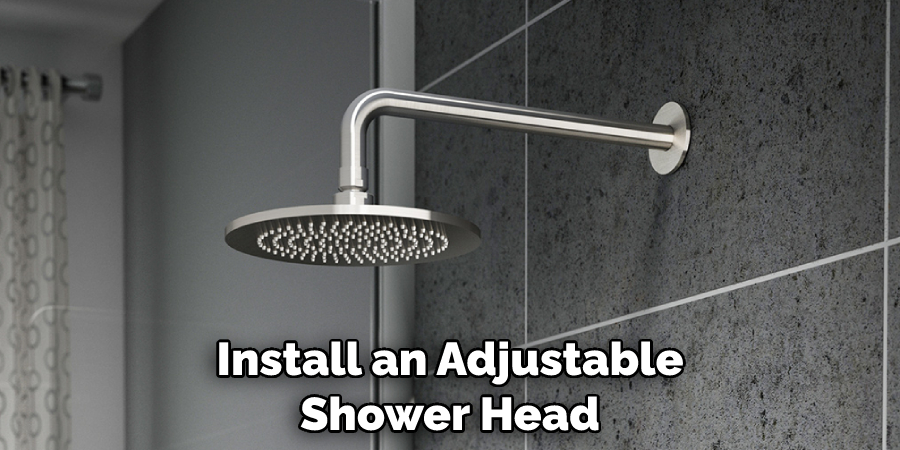
5. Make sure to check periodically how well your hot water temperature control valve is working by testing how warm/hot the water coming out of your taps is. If the water is too hot or cold, you may need to adjust your valve again.
By following these tips and tricks, you can easily adjust how hot or cold the temperature of your hot water is with a temperature control valve. With the right adjustment, you will be able to enjoy a pleasant shower experience that is tailored to your exact needs!
5 Things You Should Avoid
1. Don’t attempt to adjust the temperature control valve while the water is still running. This can cause a dangerous surge of hot water that could scald or otherwise injure you.
2. Don’t turn the temperature up too high on your hot water heater, as this can cause mineral buildup and corrosion, leading to costly repairs or replacement of the unit.
3. Don’t forget to check for any leaks after adjusting the temperature control valve, as this could result in additional damage or even a flood if not caught in time.
4. Don’t attempt to adjust the temperature control valve if you are unfamiliar with how it works – doing so incorrectly could result in serious injury or damage to property.
5. Don’t attempt to adjust the temperature control valve without wearing protective equipment such as gloves, safety glasses, and respiratory masks – these tools will protect you from potential harm while working around hot water systems.

You can easily adjust your hot water temperature control valve with the proper knowledge and safety precautions. Keep these things in mind when attempting to do so, and you will be able to make a successful adjustment!
Can You Adjust the Hot Water Heater Capacity?
If you are attempting to adjust the hot water heater capacity, it is important to note that there are certain factors that will affect how much the unit can produce hot water. These factors include how many people/appliances use hot water in the home and how large the tank on the unit is. If you find yourself needing more hot water but cannot increase your tank size, consider investing in a larger unit or insulating your existing one to preserve heat better.
In any case, make sure to consult a professional before making any adjustments, as this could lead to potential problems down the line.
By following these tips, you should now know how to adjust the hot water temperature control valve safely and efficiently! With some care and attention, you can ensure that your hot water system is running smoothly and safely.
Why is Your Hot Water Not Very Hot?
If you notice that your hot water is not as hot as it used to be, this could be due to a few different factors. These are the following:
1. A Faulty or Improperly Adjusted Temperature Control Valve: If the temperature control valve is not adjusted correctly, it could result in hot water not reaching its desired temperature. It is important to check the settings and make any necessary adjustments before attempting more drastic measures.
2. A Leaking or Clogged Hot Water Pipe: A leaking or clogged pipe can cause a decrease in the amount of hot water available from the heater. Make sure to check your pipes for any visible damage, as well as any blockages that may be present. If necessary, you can also flush out your hot water pipes to ensure they are clean and free of debris.
3. Low Water Pressure: Low water pressure can cause a decrease in how hot your water gets, especially if it’s coming from an older water heater. Make sure to check the pressure on your water lines and consider upgrading if necessary.
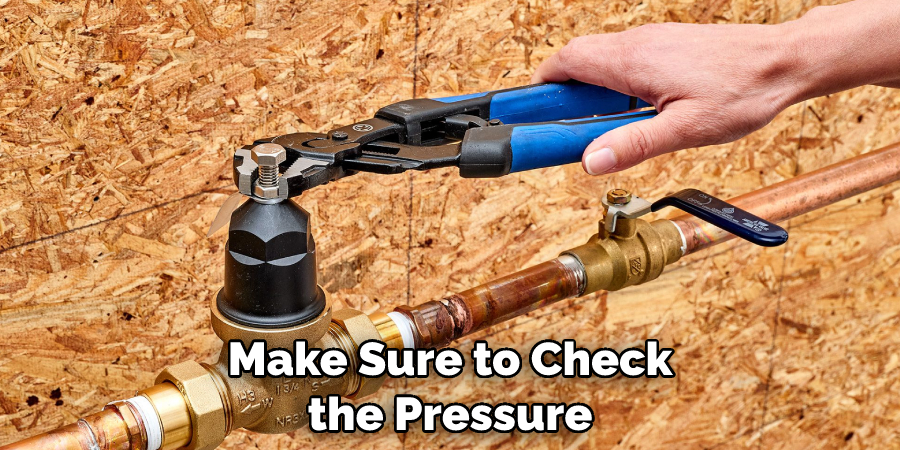
4. Scale Buildup: Scale buildup can prevent hot water from reaching its full potential, resulting in lukewarm or tepid water coming out of your taps. If this is the case, having a professional come in and clean off any scale that may have accumulated within the system is important.
By following these tips, you should now be able to identify what could be causing your hot water not to reach its desired temperature! Once you know the cause of your problem, you can adjust your hot water temperature control valve accordingly.
Conclusion
Installing a new hot water temperature control valve or adjusting an existing one is an important task that every homeowner should know how to do. Although it’s not a complicated process, it’s essential to ensure that you have the right tools and safety equipment, and knowledge. With these tips in mind, you can do it properly the first time without spending too much time or money. Remember to check for any leaks when finished!
With a few additional precautions, anyone can easily adjust their home’s hot water temperature control valve. By taking on this task yourself and understanding what needs to be done, you’ll be effectively managing your own plumbing so that your home is safe and running more efficiently.
Hopefully, the article on how to adjust hot water temperature control valve has provided you with the necessary information to get started. Remember that it’s always a good idea to consult a professional before making any adjustments and take all precautionary measures when dealing with water and electricity. Good luck!

